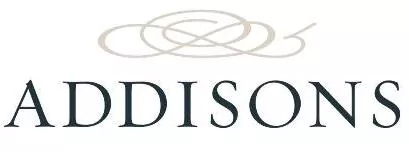The recent decision of the Federal Court in ACCC v TPG Internet Pty Ltd1 sets out clear guidelines in respect of sales promotions, particularly in respect of the manner in which prices should be displayed and conditions identified. This is relevant to all businesses, including gambling and betting operators.
The TPG advertisements considered by the Court related to a new broadband offer where, for $29.99 a month, customers could sign up to their unlimited ADSL2+ network. However, the fine print stated that this offer was available only as part of a package which cost an additional $30, and involved an upfront setup charge and deposit. As a result, the Court determined that the advertisement constituted misleading and deceptive conduct in contravention of sections 52 and 53 of the Trade Practices Act (now sections 18 and s 29 of the Australian Consumer Law).
The clear principle from the decision is that any information which corrects or qualifies the primary message of an advertisement must be sufficiently clear and prominent if it is to prevent the primary message from being misleading. With this principle in mind, gambling industry participants must ensure that their promotions as a whole are truthful. If any qualifications exist, they must be clear, precise and prominently stated.
One example where these principles should be followed relates to promotions for sportsbetting operators which offer bonus bets. Initially, they may appear to offer very attractive incentives. However, where the website terms and conditions qualify (or if there exists small print at the bottom of the advertisement which qualifies) substantially the unconditional nature of the bonus bet being promoted, considerable care must be taken to ensure that those conditions are prominently stated. For example, if it is a requirement that a customer must deposit $250 to get a $250 bonus (rather than receiving the $250 in any event), this must be obvious on the face of the advertisement (or the relevant page of the website). A failure to do so may give rise to a claim in misleading and deceptive conduct.
In considering the Internet advertisements of TPG, the Court found2 that they did not display corrective information with sufficient prominence or clarity to dispel the false dominant message. Just because information is present somewhere on a website is not enough. Advertisers should ensure prominence and transparency when creating promotional campaigns. This is particularly relevant to betting operators, as well as other participants in the gambling sector.
Section 53(g) (now section 29(m) of the ACL) prohibits a corporation from making a false or misleading representation concerning the existence, exclusion or effect of a condition. Some bookmakers may wish to include a promotion where you can "refer a friend and get a $50 bonus bet. In many cases of promotions of this type, there is often a statement in the terms which states that a condition applies, namely that the friend must not only sign up but must also deposit money and make a bet above $50. This may not be clear on the face of the advertisement and the conditions may not be sufficiently prominent or clear. As a result of the TPG decision, there is a risk of a contravention of section 23(m).
In TPG, the Court stated "it is an unfair trade practice to require consumers to find their way through to the truth, past advertising stratagems which have the effect of misleading or being likely to mislead them". This comment applies to all advertisements, such as gambling sector advertising just as much as to promotions by mobile phone providers or supermarkets. Consumers should not be forced to find out for themselves details of the conditions.
All gambling companies must be aware of the risk that arise in respect of promotional materials and take care in structuring their advertisements so as to not mislead or deceive.
This is not a gamble that should be taken.
Footnotes
1[2011] FCA 1254
2At para 92
The content of this article is intended to provide a general guide to the subject matter. Specialist advice should be sought about your specific circumstances.


